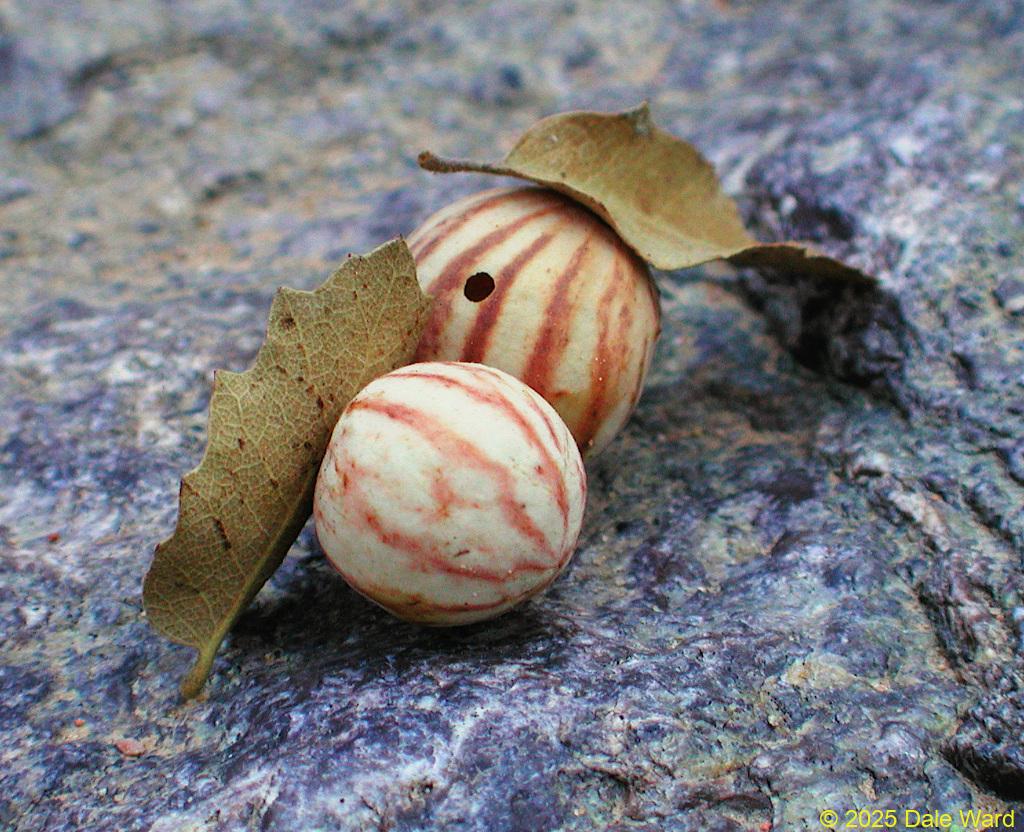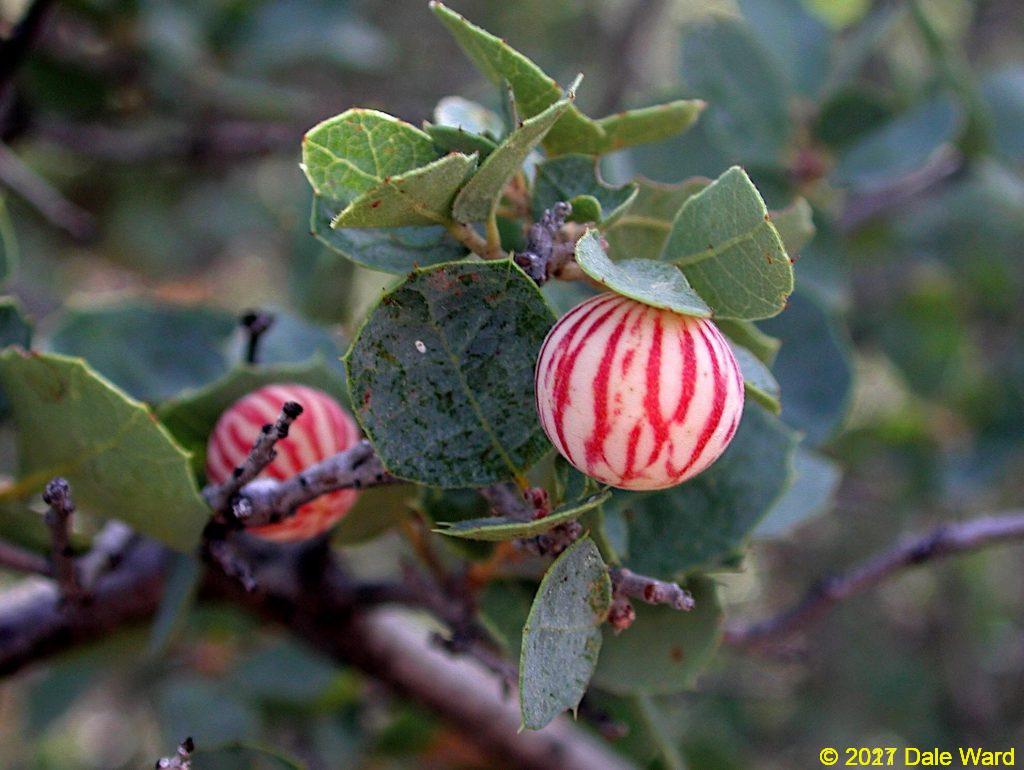Scrub Oak Gall
Looking at a cool gall, and finding out more about its strange origins
On a sunny August day in 2001, I was hiking along a small creek in Arizona’s Mazatzal Mountains. I noticed some brightly colored spheres attached to some of the scrub oak near the creek. They had a glaring, artificial quality about them…my initial reaction was “Why, those must be beach balls that Tinkerbell has left laying around”.
But then I realized that these are galls - over-growths of plant tissue stimulated by a creature other than the plant. The gall-inducing organism lives inside the gall the creature convinced the plant to build. From there, it may eat the plant’s tissues, drink its sap, or just use the gall as a safe place in which to metamorphose.
There are a bunch of organisms that can cause plants to develop galls - bacteria, fungi, mites, thrips, nematodes, beetles, flies, and still others.
These brightly colored ones were probably caused by a type of wasp, likely a Gall Wasp in the family Cynipidae. I’ll guess further that they were caused by wasp in the genus Amphibolips, though that identification is a bit of a stretch.
These wasps are very interesting. They are tiny, about 5 mm long. They pierce the plant and lay eggs inside the plant tissue. These eggs hatch, and the larvae secrete chemicals which tell the plant to create the gall.
This genus of wasps has a complex life-cycle. Wasps emerge in the late Winter/early Spring. These wasps are all female wasps - there are no males. This generation of wasps create their eggs through parthenogenesis - “virgin birth”. They lay their eggs in the twigs and branches of oaks. These eggs hatch, and the larvae create small, brownish/beige galls on the oak twigs. When these larvae emerge as adults, there are both male and female wasps. They are fairly short-lived.
These male and female wasps mate, and lay their eggs on oak twigs and branches. The larvae which hatch from these eggs create the “oak apple” galls. They are more long-lived than the other generation - it may take more than a year for them to mature. But, ultimately, the larvae emerge as all-female, and lay their parthenogenic eggs to start the cycle over again.
So the wasps alternate - one generation each year produced sexually, then the next generation of the year produced asexually.
The larvae that produced the galls in my photo are most likely from the “late” generation, the asexual, “virgin birth” portion of the wasps’ cycle. There are a lot of different species of Cynipid wasps, and they have a bunch of variations on the life cycle above. Some of them sneak into the galls created by other wasps rather than make their own, sometimes the all-female generation includes a small percentage of male wasps, but still reproduces primarily parthenogenically, etc. Again, it seems as though “Everything you can think of is true”.
 Another set of galls - from May of the previous year. These ones were faded, and attached to oak leaves that had fallen from the oak. You can see a hole in one of the galls, probably where the wasp exited the gall.
Another set of galls - from May of the previous year. These ones were faded, and attached to oak leaves that had fallen from the oak. You can see a hole in one of the galls, probably where the wasp exited the gall.
I’ve seen a lot of galls over the years, but these are the most brightly colored. Usually, round leaf galls like this are uniformly colored brown, and larger than these and often turning bright apple-red. People call the brown/red galls “oak apples”. A cool thing about “oak apples” - these galls were commonly used for the production of ink (“iron gall ink“) in Europe from the 5th to the 19th centuries. Da Vinci, Van Gogh and Rembrandt used iron gall ink for some of their sketches, for example. The United States Postal Service own official recipe for making the ink. The Dead Sea Scrolls were written in iron gall ink.
Oak galls such as the ones in this post, which are brightly colored and/or striped, are usually called “oak plums”, and are associated with acorn caps. I don‘t know for sure if the galls in the photo are not just young versions of the brown “oak galls”. But I don’t think so…I think they are related to the “oak plum” acorn galls, but formed in a different place on the plant. Perhaps a different species of wasp than the “oak plum” wasp?
Absolutely fascinating, in any case.
Sources:
Acorn plum galls: https://www.backyardnature.net/n/x/plumgall.htm
“Dead Sea Scrolls were written in iron gall ink”: https://religion.wikia.org/wiki/Dead_Sea_scrolls
Fascinating info on gall wasps: https://leftcoastnatty.blogspot.com/2010/09/oak-gall-wasps-cynipids.html
Site with a lot of interesting stuff, including galls: Arizonensis.org
